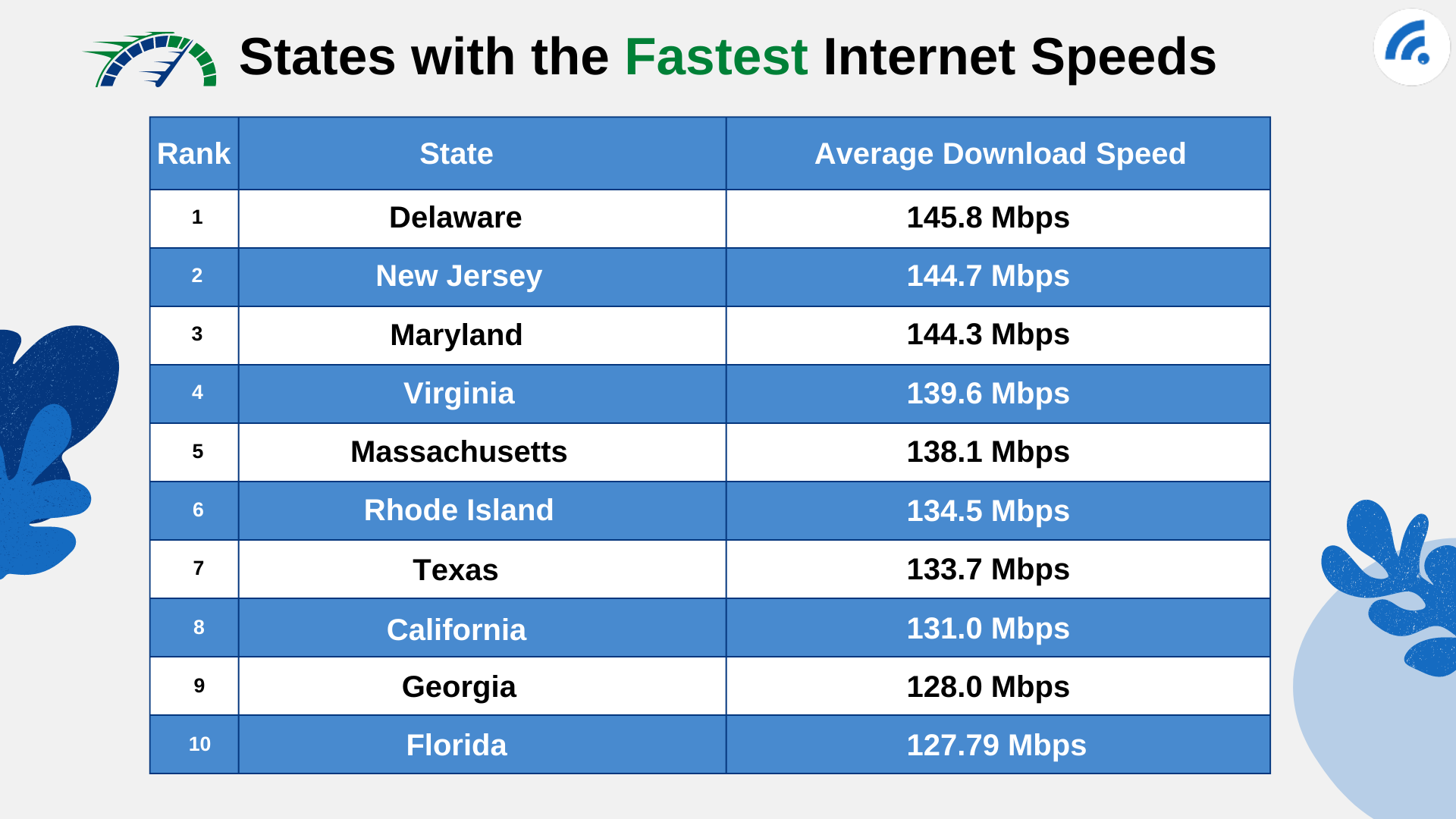There's no question that the digital technologies developed over the past half-century have completely changed the world. So much of our lives have moved online that having a solid internet connection has become a requirement for succeeding in modern life; the web is how we communicate, find jobs, shop, meet people, learn, work, and so much more.
However, if you are from an area considered "rural," or if you've ever spent considerable time in one, you know that finding a good internet connection that allows you to use the web the way you want to can at times be quite a challenge.
If you're away from the city for a getaway weekend, this might not matter too much. Still, if you call such an area home, the lack of quality internet can be a real hindrance to your life and can leave you far behind or entirely excluded from the rest of society.
To better understand this problem and its many different nuances, we have put together this report that analyzes the difference between internet connections in urban versus rural areas. We also identified some of the things we need to keep in mind as we attempt to tackle this problem.
The Problem
As usual, we cannot hope to tackle this problem if we don't first understand it. And when it comes to the digital divide that exists between urban and rural communities, there are a few different layers we need to consider, which include:
Access
Most Americans have access to the internet, but when it comes to broadband internet - which the FCC defines as a connection of 25 Mbps or more - the picture is much different. Here are some statistics to consider:
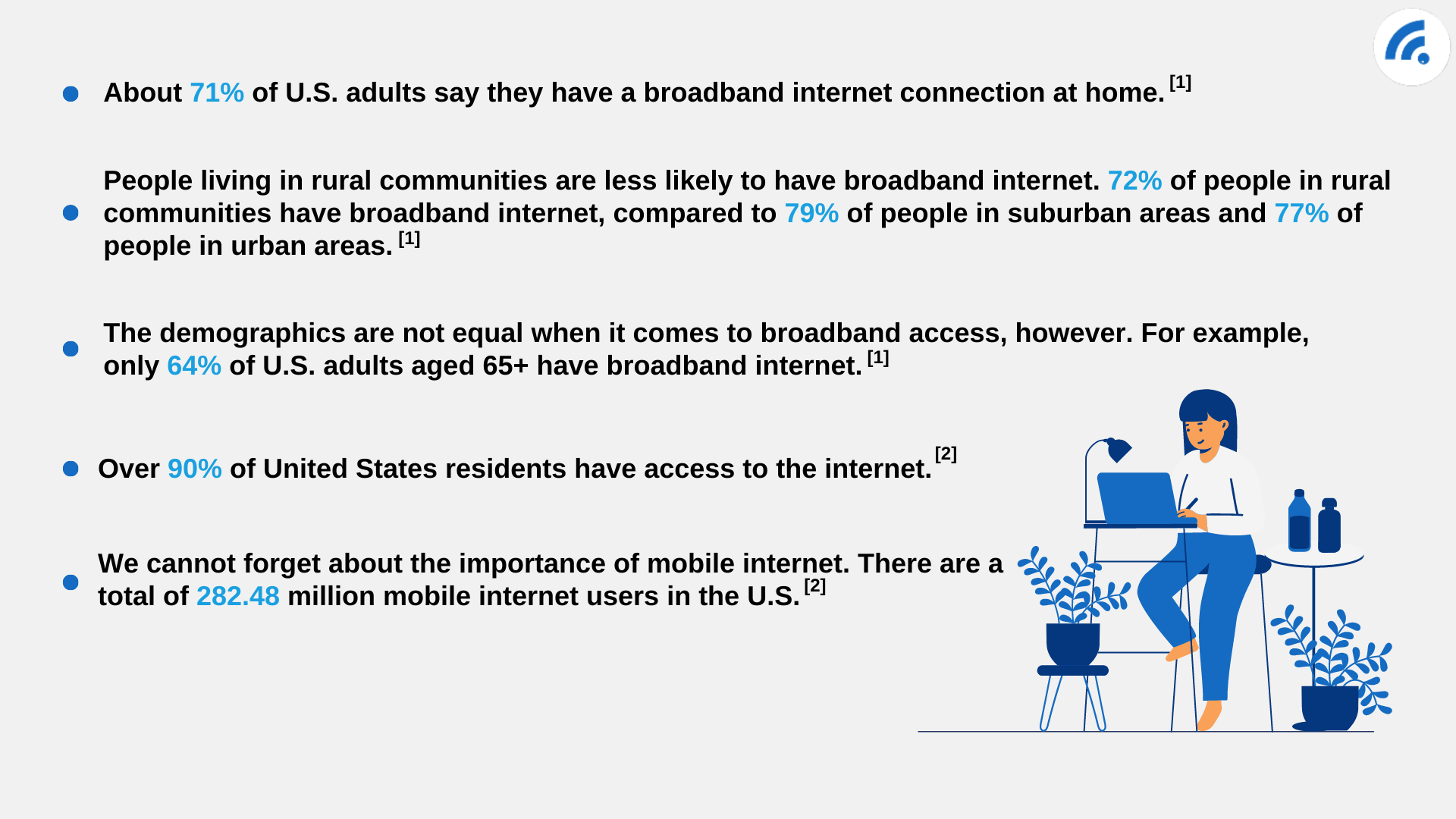
Urban residents also see this as an issue is another point of concern, but the gap between city and country-dwellers is pretty dramatic.
Defining Access
One important thing to keep in mind when looking at the digital divide between urban and rural communities is how access is defined, as this will have a significant impact on how we understand the issue.
As mentioned, the FCC currently defines broadband internet as 25 Mbps download and 3 Mbps upload (often written shorthand as 25/3), and wireless internet connections, such as that you get from your cell phone, do not count. A few years back, there was a point when they were considering changing this, and many believed this idea was meant to help ease the burden on ISPs, but this didn't happen. The 25/3 definition remained intact.
However, many watchdog groups believe this 25/3 standard set back in 2015 is out of date and should be changed to 100 Mbps to reflect the increased demand we now place on our networks. Many people, even in the FCC, agree. If this were the case, then the numbers presented here would probably be much more dramatic as few areas in the country regularly experience this kind of speed (although ISPs like to advertise that these speeds are available all over).
For our study, we will continue to define broadband as 25 Mbps download and 3 Mbps upload. It's important to remember that this is quickly becoming an outdated standard that would pretty dramatically alter the digital landscape in the United States if changed, or at least our perception of it. Because as it stands, practically everyone has broadband internet, but not everyone has equal internet or sufficient internet.
Competition
Americans generally pay more and have fewer options than similarly-developed countries (mostly those of Europe). When we look more closely at this issue, things become quite dismal.
For example, a few years, ago, 83.3 million Americans could only access broadband internet through a single provider. Comcast and Charter have a complete monopoly on around 47 million people. Another roughly 30 million people have another choice, but it is a far inferior choice that provides no true competition.
Interestingly, economics considers it necessary to have at least three firms operating in a market for true competition to occur. Much of the United States does not meet this threshold. This means that not only is it likely for prices to be higher, but ISPs will also have little incentive to make the needed investments to improve the quality of service they provide to these areas.
Speed
Lastly, and we've already hinted at this, is speed. Having access and competition is great, but it's equally, if not more important, that users have access to the type of internet speeds they need to do what they want to do online.
Based on the research that's already been done, we had a pretty good idea of what we would find: rural areas and more rural states would have, on average slower speeds.
To test this, we did a few things.
First, we looked at which states had the fastest and slowest average internet connection speeds.
Looking at this will help us better understand the issue since ISPs are known to advertise much higher connection speeds than their networks actually provide, helping us gain a clearer picture of the broadband scene in both rural and urban areas.
We also chose to use each state's "population density ranking," meaning a number between 1-50. This was better than using actual population density since it reflects the relativity between each area and tells us how density affects download speeds.
Here's what we found based on data from highspeedinternet.com, among other sources:
Ten States with the Fastest Internet Speeds Compared to their Population Density Ranking
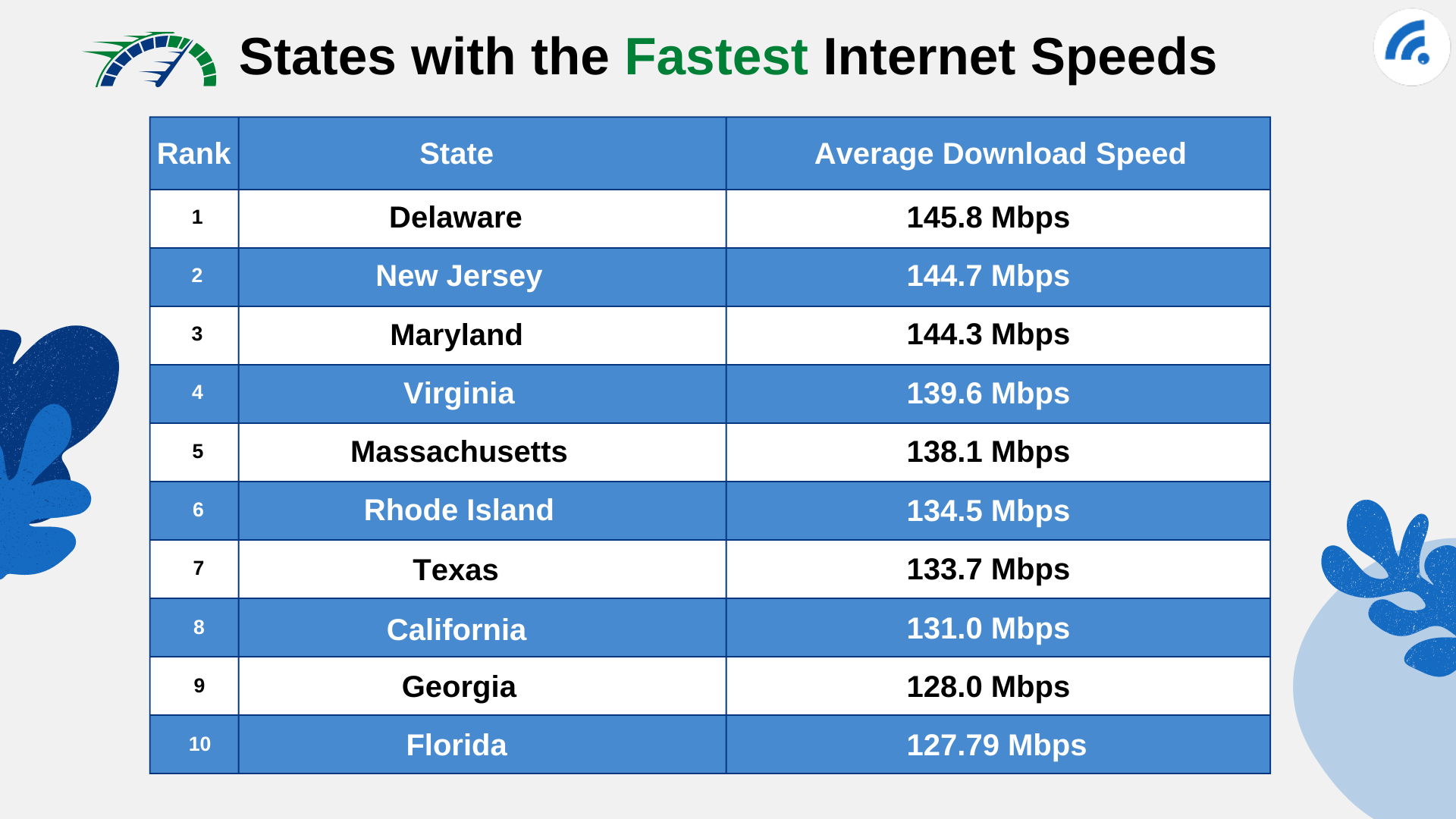
There are very few surprises on this list. You know most of these states have large, dense cities in them, even if there are rural areas surrounding them. Georgia and Texas might come as a slight surprise, but they have large cities. And there are no states that we would consider strictly rural on the list.
Yet what about those states that we would think of as the slowest? Here's what is happening on the other end of the list:
Here's what is happening on the other end of the list:
Ten States with Slowest Internet Speeds Compared to their Population Density Ranking
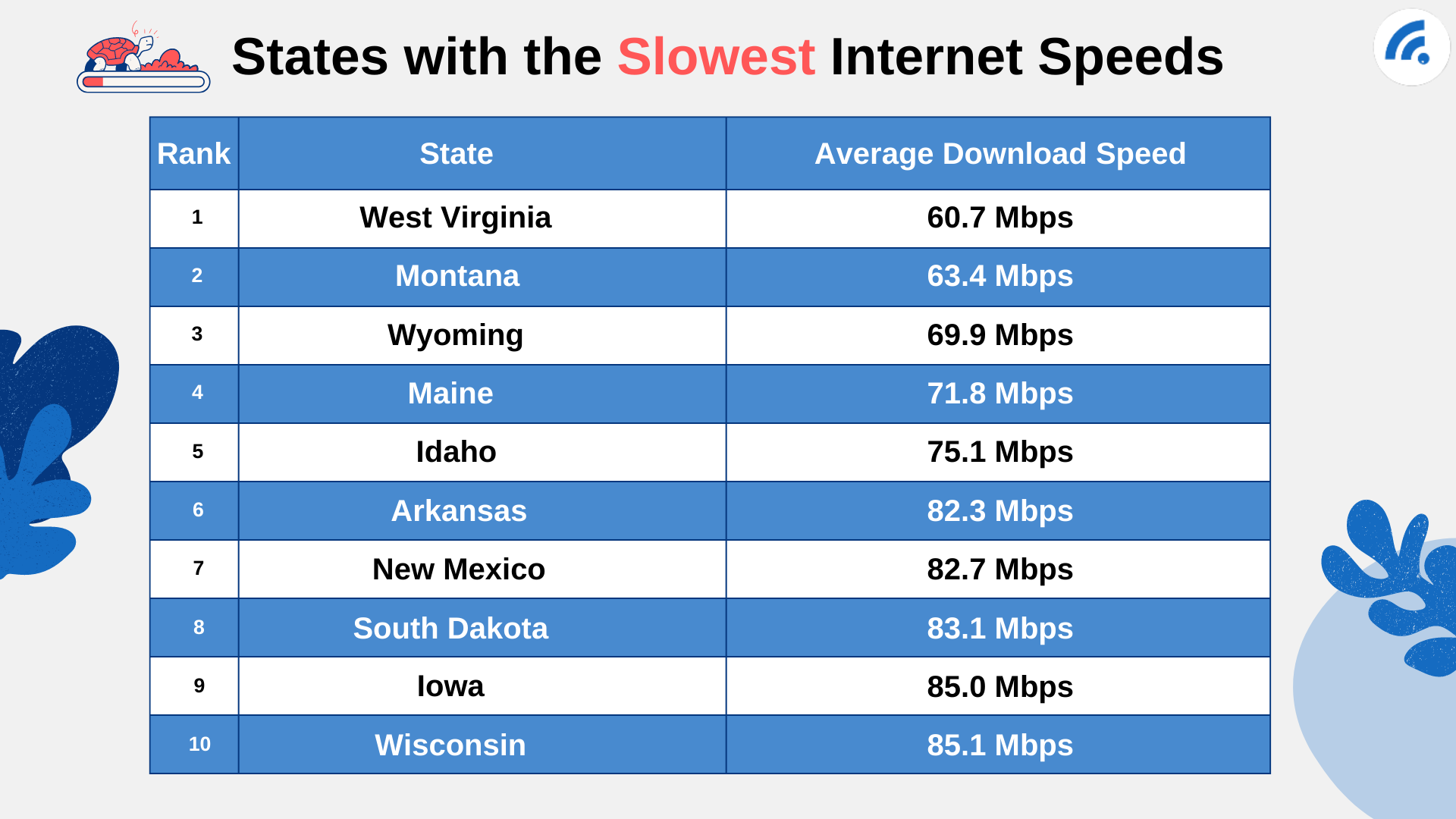
These numbers show us partially what we were thinking, but perhaps a couple of surprises depending on your perception of a state. The good news is that the average speed is rising and has risen quite a bit over the past few years, but there is a major divide to contend it nonetheless. On average, people have broadband internet. Yet remember that this is an average, and millions of people will fall well below that average.
Internet Speeds By Population Density Ranking
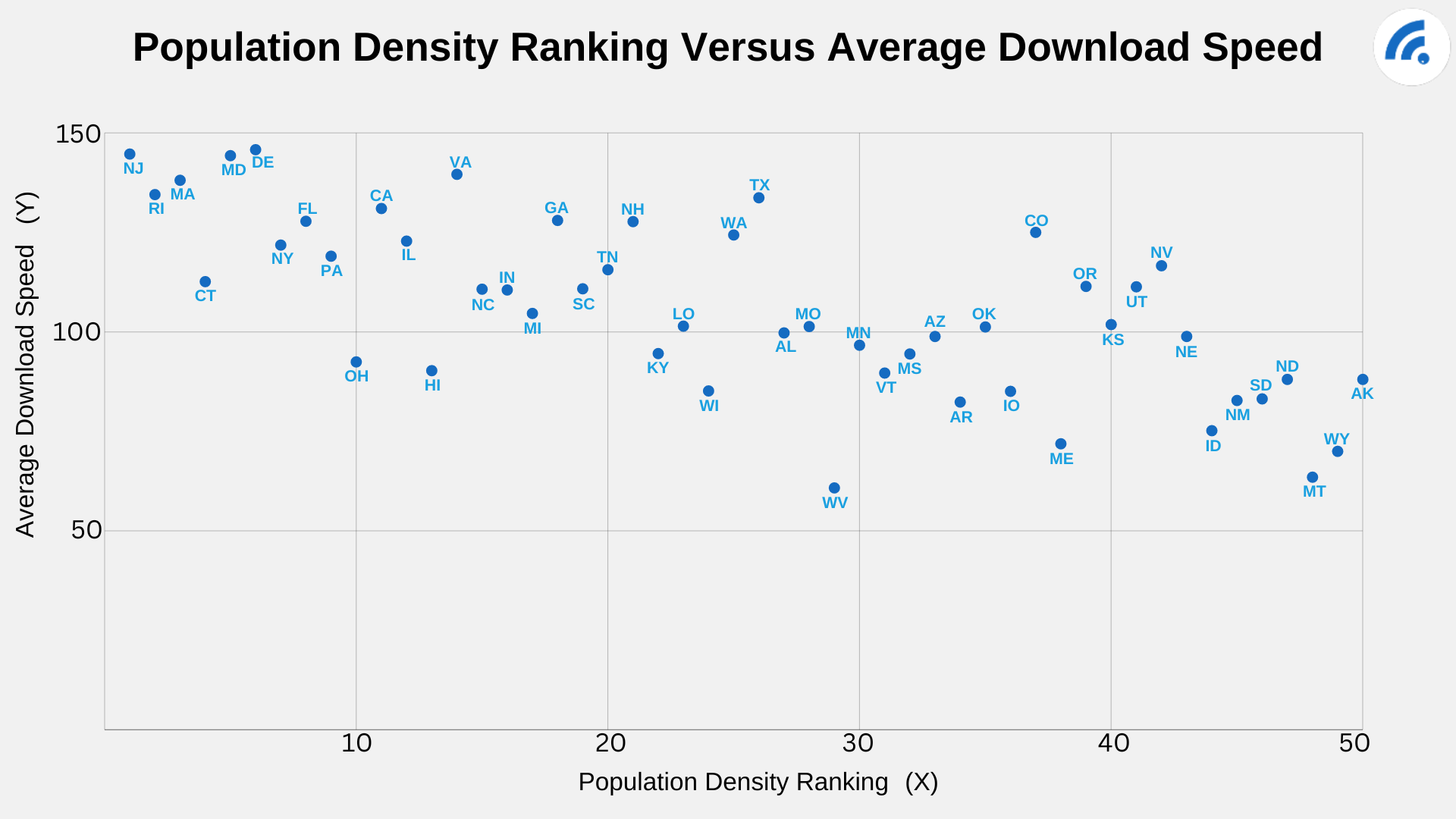
This graph shows a pretty clear link between population density and average download speed, which in turn shows a clear difference between urban and rural areas when it comes to internet service. There are several outliers, but generally, the trend is pretty clear.
We suspected this might be the case, but it's still disappointing to see how little progress has been made on the quest to close the gap between the different areas of the country and provide access to all.
Why it Matters
As you can see, the difference in access, competition, and speed between urban and rural areas is pretty stark. But the question you might now be asking is: why does it matter? After all, those who live in rural areas should be used to reduced or limited services, and they may not even want them.
That might be the case for those with the means and opportunity to live in a rural area purely by choice. However, the reality is that 46 million Americans live in rural areas. This group is too large to overlook or ignore because they "chose it."
Additionally, it's also important to remember that we're talking about internet access, something most of us simply cannot live without. And if we're forced to live without it, then it means we will have fewer chances to do what we want with our lives. It's harder to find jobs, do those jobs, meet people, get educated, and more. Denying this to more than 46 million Americans is denying them the same chances that those who come from areas with good internet have, something that a society that claims to be free and equal simply cannot tolerate.
The COVID-19 crisis of 2020 has also helped show why everyone needs to have access to good internet. The pandemic forced businesses all over the country to close, and for many, being able to keep a job was only possible thanks to their home internet connection. Hopefully, something like this won't happen again, but if it does, everyone must have access to quality internet to adapt in the same ways as others and keep their lives moving forward.
How to Fix It
Clearly, there is an issue in the U.S. with providing access to broadband internet in rural areas. And with so many Americans living in rural areas, this problem is one we cannot ignore and must address if we are going to progress equally and have the same opportunities to live the lives we want to live.
However, as you might expect with such a significant and important issue, there are several different schools of thought regarding how we should solve this problem. Most of the arguments that go on during these conversations center around one of the following issues:
Wired or Wireless?
Most can agree that there is a need to better serve rural communities with broadband internet connections. However, how to do this is still a point of contention.
At the moment, to get consistent broadband service, most people need access to a wired or "terrestrial" connection, meaning one that relies on either cable, phone, or special fiber optic lines to deliver the connection.
This is because terrestrial networks are more reliable and can deliver faster speeds, but the time and capital investment needed to lay these cables and their supporting infrastructure down is immense.
The investment is worth it in more densely-populated areas since you can connect many people to the same lines and quickly recoup your initial costs. But in rural areas, where homes are sometimes miles apart, it takes much longer to earn back what you spent to put those cables down, and connection speeds are bound to suffer.
One solution is to deliver broadband internet to these rural communities wirelessly, either through a satellite or through a mobile broadband network such as 5G.
Currently, the FCC does not recognize a mobile connection as being broadband (although they almost did to try and help them fudge the numbers about the digital divide), but this could change if wireless connections get better and can deliver faster speeds. There are also projects in motion, including one by Elon Musk, to put satellites into orbit to give broadband access to nearly everyone on the globe.
These technologies are promising, but we are still far away from relying on them as our primary means of connecting to the web. We must continue to focus on wired networks and how they can be expanded while also looking for new ways of reaching people. Achieving a balance between the two approaches plays a significant role in defining the debates on where to go next on the way to closing the digital divide.
Regulation or Market Forces?
Another key component of the urban/rural digital divide is the role of the government. As we discussed earlier, for a business, it often doesn't make sense for them to invest the funds required to connect rural areas of the country to the web because the return simply isn't there.
These companies must do this if there is the hope of improving access to broadband internet and competition within the market. So, it's therefore necessary for ISPs to have an incentive, one of which could be provided by the government in the form of tax breaks or other assistance that would make it more cost-effective for them to serve communities previously left out of an ISP's service area.
Those on the other side of this debate would argue that such government interference is dangerous as it makes it possible to turn the effort to bridge the gap between urban and rural areas, an issue that should be approached with the spirit of collective betterment, into something political. Adding a political aspect almost always stunts progress or creates too few winners and too many losers. The solution is to instead leave these issues up to the market; if there is a need, someone will rise up to fill it. In this case, we know there is a need, so it's only a matter of time before we innovate a response.
The answer likely lies somewhere in the middle. A situation where authorities do something to push private enterprises into serving these communities while not playing such an important role that it can get in the way of carrying out the initial objective of bringing broadband to the more remote parts of the country.
Cost
The last major concern that most people discuss is the cost. To put it simply: who is going to pay for this? Waiting for private industry to see the advantage may take ages, but it's difficult to fund such a tremendous project purely with public money. There is an argument for allowing governments to shoulder most of the burden since they are generally more able to handle long-term debt, but there is only so much money.
Once again, the way forward likely lies somewhere in the middle. Private industry must be asked to contribute, but public institutions also have a responsibility to motivate this transition and help people access what has become an essential piece of technology for succeeding in the modern world.
Moving Forward
We must answer these critical questions, and it's important to do it soon. Our data doesn't suggest the digital divide is widening, but it certainly shows that it's not narrowing. And as the world moves more and more online, businesses will have to choose where to invest when improving their networks.
Of course, it makes sense that more resources go to urban areas where more people live and can enjoy the investment, but rural areas, representing a large chunk of the American populace, cannot be left behind. Targeted investment stimulated by smart policy and collectivist collaboration is needed to bring broadband internet to more corners of the country and make it easier for all Americans to participate in our modern world's digital aspects.

